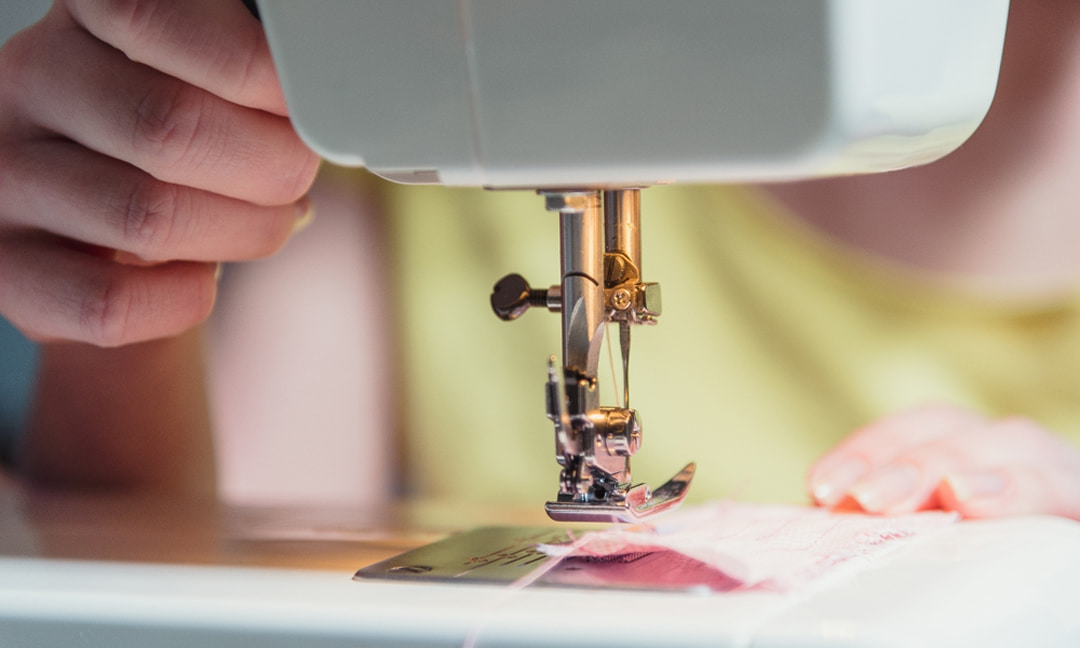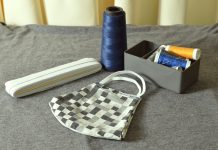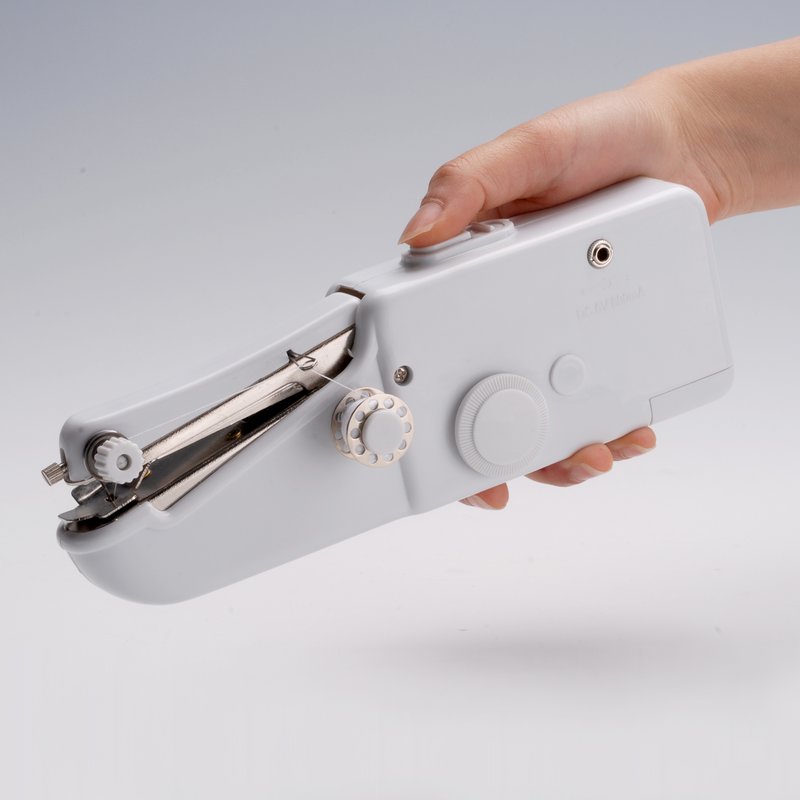Whether you have years of sewing experience or you’re just starting out, there are plenty of useful tipsthat can help you take your projects to the next level.
The following 10 sewing tips improved my sewing. 
1. Regularly Clean Your Sewing Machine
A clean sewing machine will always outperform one that’s clogged with dust and lint, no matter the operator’s experience.
Lint and dust are unavoidable by products of sewing; the more you sew, the more they’ll fill your machine, along with other debris. Regularly cleaning your machine is the easiest way to make sure it’s running at its best to avoid accumulated debris and damage to your device.
The instruction manual that accompanied your sewing machine should have detailed instructions that explain the correct way to clean the device.
I’d recommend cleaning your sewing machine after about 10 hours of use, but more frequent cleanings are never a bad thing.
2. Be Careful Where You Plug Your Sewing Machine In
Sewing machines are often damaged when someone trips over the power cord and pullsit off a surface. Additionally, this can be a serious safety hazard.
Try to avoid stretching your sewing machine’s power cord across high-traffic areas. Make sure it’s unplugged if you’re planning on leaving your machine unattended for a significant period of time. This is particularly important if you live with small children.
3. Consider Thread Quality
There are countless types of thread available. Cheap thread might save you money in the short term, but it can damage your sewing machine if it’s used too often.
The cheap thread you can find at dollar stores might seem harmless, but it’ll almost always deposit lint and fibers within the internal mechanisms of your device.
Investing in high-quality thread will help protect your machine and ensure your projects look their best.
4. Rethread When Necessary
Although some people try to avoid the time-consuming task ofrethreading as much as possible, it’s worth the extra effort.
Rethread the needle if the material is too tight, lose, or if you’re machine is skipping stitches.
Additionally, check around the needle plate while you’re rethreading to see if any lint has accumulated. Cleaning away unwanted lint particles will help you avoid stitch errors.
5. Practice With Scrap Pieces of Fabric

6. Control Your Speed
Regardless of your skill level, rushing through projects almost always results in mistakes.
One of the easiest ways to stay in control of your speed is to use the foot pedal without shoes,which add extra weight and give you less control.
Stay in control and slow down, especially if you’re about to sew a difficult or complicated pattern.
7. Say No to Unwanted Projects
It won’t take long for people to start requesting favors once you begin using a sewing machine. If it always seems like you’re sewing because you feel pressured into taking on various projects, you’ll soon grow to resent something that should be enjoyable and relaxing.
Remember, it’s OK to say no if you don’t feel comfortable taking on someone else’s sewing task.
8. Consider Using a Surge Protector
Plugging your sewing machine into a surge protector will help keep it safe. It’s worth keeping your investment safe given how many modern sewing machines use sophisticated internal computers.
Surge-protector power bars are both affordable and readily available. They’re portable and can be plugged into any standard power outlet.
9. Keep Your Workstation Organized
A clean and organized workplace is one of the keys to a successful and enjoyable sewing experience. Having all of your supplies and tools within reach will prevent frustration.
For example, rather than wasting time searching for misplaced thread, you can quickly find what you need and stay focused on the task at hand.
Make organizing your supplies and cleaning your workspace a habit and your sewing experience will improve.
10. Replace Needles When Necessary and Choose the Right Type for Each Task
Sewing needles bend and become dull over time. A general rule is to replace your needle after you’ve completed a lengthy project.
It’s also important to use the right needle for each job. While many people favor a universal needle for most of their sewing jobs, they’re not always the best choice. Certain fabrics require specialized needs.
For example, small needles tend to work best for thin fabrics. Twin needles are better when you’re taking on hemming projects. And ballpoint needles are well-suited for knits and stretchy fabrics.
Stockpiling the needles you use the most frequently will make it easier to replace them when they become dull or damaged.









